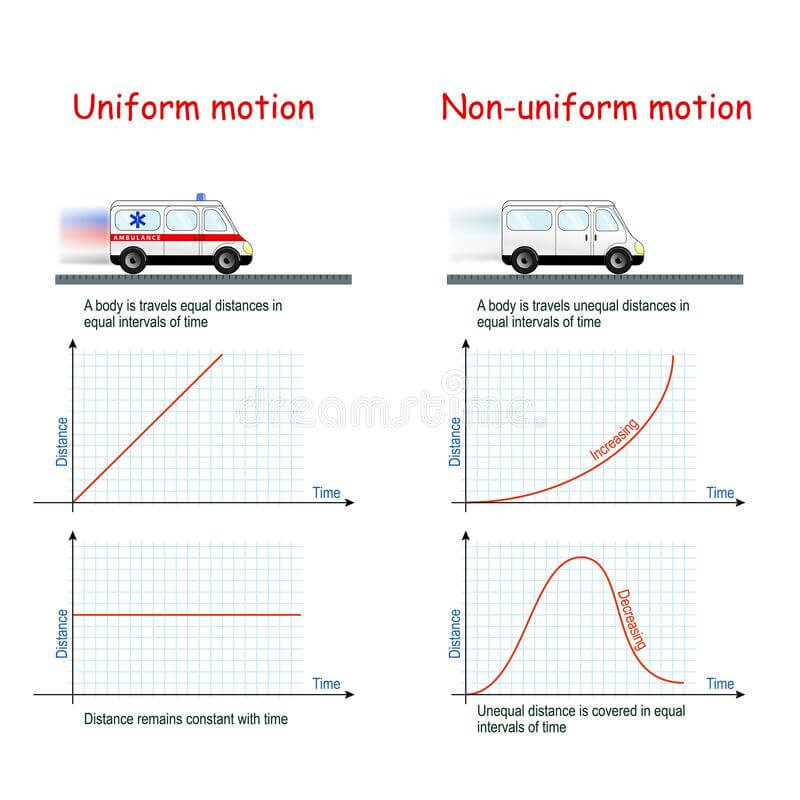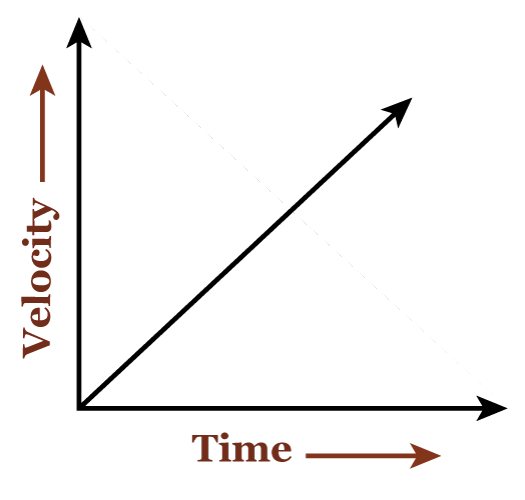Uniform Motion DefinitionUniform motion, also known as constant velocity motion, is a type of motion where an object moves at a constant speed in a straight line. Uniform motion is a fundamental concept in physics, and it is essential for understanding more complex physical phenomena, such as acceleration and non-uniform motion. The concept of uniform motion can be understood by looking at a few key elements that define it. First, the speed of the object must be constant. This means that the object's velocity does not change over time. Velocity is a vector quantity, which means it has both magnitude and direction. Therefore, the object must move in a straight line and in a constant direction for a uniform motion to occur. Any change in speed or direction would result in non-uniform motion. The pace at which an object's location changes about time is called its velocity. The object's velocity is constant in uniform motion; its acceleration is zero. The rate of change of an object's velocity concerning time is called acceleration. When the acceleration is zero, the object is not changing its velocity and moving at a constant speed. This can be represented mathematically as: v = d/t Where v is the velocity, d is the distance travelled, and t is the time taken. Since the velocity is constant, the ratio of distance travelled to time taken will also be constant, which means the object moves equal distances in equal time intervals. The fact that the object's distance travelled is inversely related to the amount of time required is a crucial component of uniform motion. This means that if an object travels a certain distance in a given time, it will travel twice the distance in twice the time, three times the distance in three times the time, and so on. This can be represented mathematically as: d = vt Where d is the distance travelled, v is the velocity, and t is the time taken. 
Graphical Representation of Uniform MotionUniform motion can also be represented graphically. A straight line with a constant slope, which stands for constant velocity, appears on a graph measuring the distance travelled over time. The object's beginning position is represented by the y-intercept of the line, and its initial velocity is represented by the line's slope. The constant velocity is shown as a horizontal line on the velocity vs. time graph. The line's zero slopes indicates that there is no acceleration. 
Application of Uniform MotionUniform motion has many real-world applications. For example, a car moving at a constant speed on a straight road is an example of uniform motion. In this instance, the automobile's speed is constant, travelling the same distance in the same amount of time. Similarly, the uniform motion may be seen in a train travelling continuously down a straight track. In both cases, the motion is uniform as long as the speed and direction of the objects do not change. Uniform motion is a fundamental concept in physics, and it is used to understand more complex physical phenomena. For example, when an object accelerates, its motion is not uniform. When the acceleration is not zero, the object's motion is non-uniform, and its velocity changes. This can be represented mathematically as: a = (v2 - v1) / t Where a is the acceleration, v1 is the initial velocity, v2 is the final velocity, and t is the time taken. In non-uniform motion, the distance travelled by the object is not directly proportional to the time taken, and the graph of distance travelled versus time is not a straight line. Uniform motion in science is used in the study of kinematics. Kinematics is a branch of mechanics that studies the motion of objects without considering the forces that create the motion. Uniform motion is a fundamental kinematics notion that describes objects' motion in one and two dimensions. For example, a ball rolling on a flat surface at a constant speed is an example of uniform motion in one dimension. Robotics: Uniform motion is used in robotics for navigation and movement control. For example, a robot arm that moves at a constant speed along a straight path uses uniform motion. This type of motion is used in manufacturing processes, such as assembly line production, where robots perform repetitive tasks at a constant speed. Another important application of uniform motion in science is the study of dynamics. The branch of mechanics that deals with the forces that create motion are known as dynamics. In dynamics, uniform motion is used to describe the motion of objects under the influence of a constant force. For example, if a car moves on a straight road with a constant velocity and a constant force is applied, the car will experience uniform acceleration. This is because the force causes the car to accelerate at a constant rate, which results in uniform motion. Transportation is another area where uniform motion finds a wide range of applications. Many modes of transportation, including cars, trains, airplanes, and boats, rely on uniform motion to function properly. In the case of cars, for example, the engine and transmission are designed to maintain a constant speed while the car is in motion. This allows the car to travel long distances without stopping and starting frequently. Similarly, trains rely on uniform motion to transport people and goods over long distances efficiently. Trains use a series of gears and motors to maintain a constant speed, which allows them to travel at high speeds without wasting energy. Airplanes also rely on uniform motion to stay in the air. An airplane generates lift by moving through the air at a constant speed. This allows the airplane to maintain a steady altitude and travel long distances without descending and descending frequently. The same principle applies to boats, which use a constant speed to maintain their course and navigate through the water. Many sports, including track and field, cycling, and swimming, rely on athletes achieving and maintaining a constant speed to achieve success. In track and field, for example, athletes aim to maintain a constant speed throughout the race, which allows them to conserve energy and finish strong. Similarly, in cycling, athletes aim to maintain a constant speed throughout the race, which allows them to conserve energy and maintain their position in the pack. In swimming, athletes aim to maintain a constant speed throughout the race, which allows them to conserve energy and finish strong. Uniform motion is also important in sports that involve throwing and kicking, such as baseball, football, and soccer. Athletes must achieve a uniform motion when throwing or kicking the ball in these sports. This allows them to generate the maximum force and achieve the desired trajectory for the ball. For example, in baseball, pitchers must achieve a uniform motion when throwing the ball to achieve maximum velocity and accuracy. Similarly, in football and soccer, kickers must achieve a uniform motion when kicking the ball to achieve maximum distance and accuracy. ConclusionUniform motion is essential in science, transportation, and sports. It has several uses, and it is critical to the efficient movement of people and commodities and the accomplishment of success in sporting events. Understanding the concept of uniform motion is critical for anyone interested in these fields, and it is a foundational concept that underpins many scientific laws and theories.
Next TopicEclampsia Definition
|
 For Videos Join Our Youtube Channel: Join Now
For Videos Join Our Youtube Channel: Join Now
Feedback
- Send your Feedback to [email protected]
Help Others, Please Share









